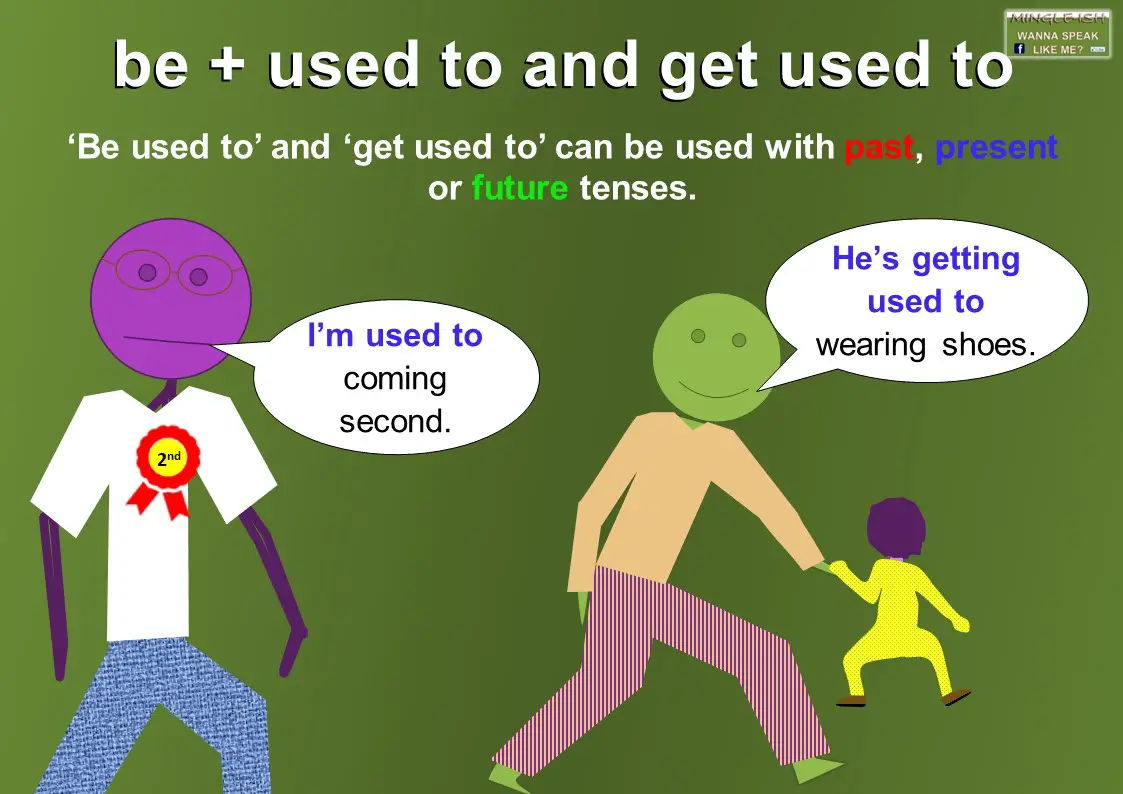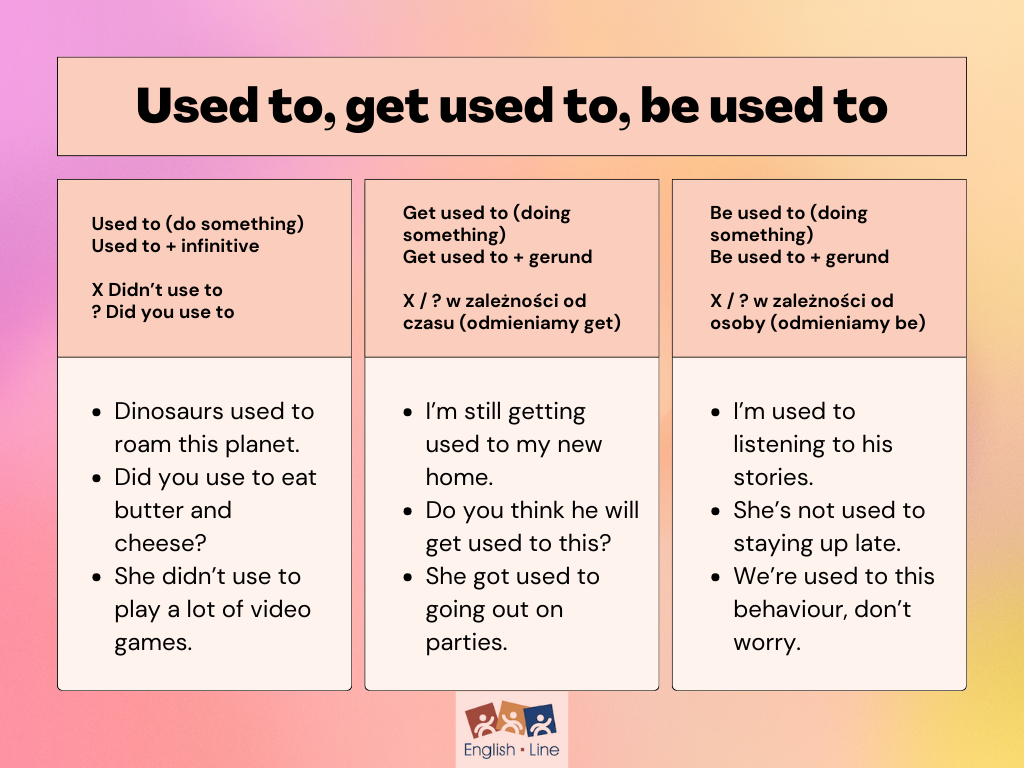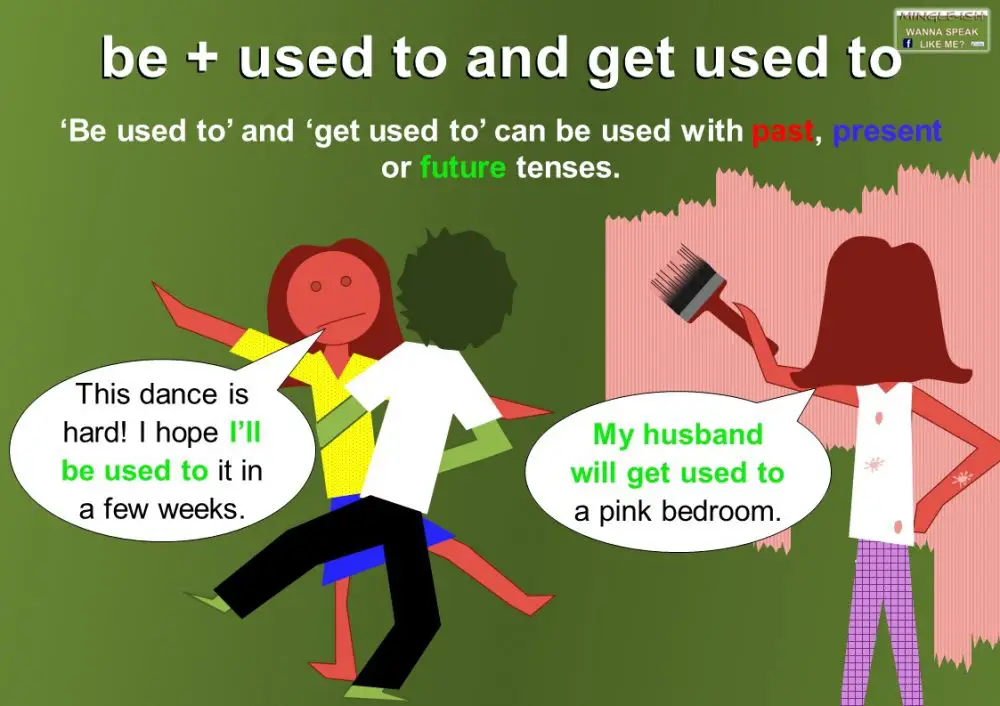Used To And Get Used To

Stai imparando l'inglese e ti sei imbattuto in "used to" e "get used to"? Non sei solo! Molti studenti trovano queste espressioni un po' ostiche all'inizio. Ma non preoccuparti, questa guida ti aiuterà a comprenderle a fondo e a usarle correttamente. Questa guida è pensata per studenti di inglese di livello intermedio e avanzato che desiderano perfezionare la loro grammatica e il loro vocabolario. Impareremo insieme come distinguere "used to" da "get used to" e "be used to", fornendo esempi chiari e consigli pratici per evitare gli errori più comuni.
Used to: Abitudini del Passato
L'espressione used to si usa per parlare di azioni o stati che erano abituali o veri nel passato, ma che non lo sono più nel presente. È fondamentale ricordare che used to si riferisce esclusivamente al passato.
Struttura e Significato
La struttura è semplice: soggetto + used to + forma base del verbo.
- I used to play football every day after school. (Ora non lo faccio più)
- She used to live in Rome. (Ora vive altrove)
- We used to go to that restaurant every Friday. (Ora non ci andiamo più)
Come puoi vedere, used to indica un'abitudine passata, un'azione ripetuta nel passato o una situazione che era vera in passato.
Forma Negativa e Interrogativa
La forma negativa e interrogativa di used to si costruiscono con l'ausiliare did, proprio come per il passato semplice. In questo caso, used to perde la "d" finale e diventa use to.
- Negativa: soggetto + did not (didn't) + use to + forma base del verbo.
- I didn't use to like broccoli. (Ora mi piace)
- She didn't use to work on weekends. (Ora lavora anche nei fine settimana)
- Interrogativa: Did + soggetto + use to + forma base del verbo?
- Did you use to smoke? (Fumavi?)
- Did he use to play the piano? (Suonava il piano?)
Esempio pratico: Immagina di parlare con un amico che ha cambiato lavoro. Potresti dire: "You used to work at the bank, right? Did you use to enjoy it?" (Lavoravi in banca, giusto? Ti piaceva?).
Get Used To: Abituarsi a Qualcosa
Get used to ha un significato completamente diverso da used to. Indica il processo di diventare abituati a qualcosa. Implica un cambiamento e un adattamento graduale.
Struttura e Significato
La struttura è: soggetto + get used to + sostantivo / gerundio (-ing form).
- I'm getting used to the new software. (Mi sto abituando al nuovo software)
- She's getting used to waking up early. (Si sta abituando a svegliarsi presto)
- We're getting used to the cold weather. (Ci stiamo abituando al freddo)
Nota bene: dopo get used to, si usa un sostantivo (the new software, the cold weather) o un gerundio (waking up early). Il gerundio è la forma -ing del verbo che funge da sostantivo.
Tempi Verbali di Get Used To
Get used to può essere utilizzato in diversi tempi verbali, a seconda del momento in cui avviene il processo di adattamento.
- Presente Semplice: I get used to new situations quickly. (Mi abituo velocemente alle nuove situazioni)
- Presente Continuo: I'm getting used to working from home. (Mi sto abituando a lavorare da casa)
- Passato Semplice: It took me a while, but I got used to living in the city. (Ci è voluto un po', ma mi sono abituato a vivere in città)
- Futuro Semplice: I'll get used to the noise eventually. (Mi abituerò al rumore alla fine)
Esempio pratico: Immagina di trasferirti in un nuovo paese. Potresti dire: "I'm finding it difficult, but I'm getting used to the different food and the new language". (Lo trovo difficile, ma mi sto abituando al cibo diverso e alla nuova lingua).
Be Used To: Essere Abituati a Qualcosa
Be used to, simile a get used to in quanto richiede un sostantivo o un gerundio, esprime lo stato di essere abituati a qualcosa. Indica che non si tratta più di un processo di adattamento, ma di una condizione stabile.
Struttura e Significato
La struttura è: soggetto + be (am/is/are/was/were) + used to + sostantivo / gerundio (-ing form).
- I am used to waking up early. (Sono abituato a svegliarmi presto)
- She is used to the noise in the city. (È abituata al rumore della città)
- They are used to working long hours. (Sono abituati a lavorare molte ore)
Esempio pratico: Se hai sempre vissuto in una grande città, potresti dire: "I am used to the crowds and the fast pace of life". (Sono abituato alla folla e al ritmo di vita frenetico).
Differenza Chiave Tra Get Used To e Be Used To
La differenza fondamentale è che get used to indica il processo di adattamento, mentre be used to indica lo stato di essere già abituati. Pensa a get used to come "diventare abituati" e be used to come "essere abituati".
Errori Comuni da Evitare
Ecco alcuni errori comuni che gli studenti di inglese commettono con "used to", "get used to" e "be used to":
- Confondere used to con get used to o be used to. Ricorda, used to si riferisce solo al passato, mentre gli altri due riguardano l'adattamento.
- Usare l'infinito dopo get used to o be used to invece del gerundio. Corretto: I'm getting used to swimming. Incorretto: I'm getting used to swim.
- Omettere l'ausiliare did nella forma negativa e interrogativa di used to. Corretto: Did you use to live here? Incorretto: Used you to live here?
- Utilizzare used to al presente. Used to è solo per il passato. Per esprimere abitudini presenti, usa il presente semplice con avverbi di frequenza (always, usually, often, sometimes, never).
Consiglio extra: Fai molti esercizi! Più ti eserciti a usare queste espressioni, più ti risulteranno naturali.
Mettiti alla Prova!
Completa le seguenti frasi usando used to, get used to o be used to nella forma corretta:
- I _______ (live) in the countryside, but now I live in the city.
- She's _______ (work) long hours, so she doesn't mind the extra work.
- It's taking me a while, but I'm _______ (the spicy food) here.
- _______ you _______ (play) the guitar when you were younger?
- He _______ (not / like) coffee, but now he drinks it every morning.
Risposte:
- used to live
- used to working / is used to working
- getting used to the spicy food
- Did you use to play
- didn't use to like
Conclusione
Comprendere e utilizzare correttamente used to, get used to e be used to è un passo importante per migliorare la tua competenza in inglese. Ricorda la differenza chiave tra le espressioni: used to per le abitudini passate, get used to per il processo di adattamento e be used to per lo stato di essere abituati. Continua a esercitarti e presto padroneggerai queste espressioni, rendendo la tua comunicazione in inglese più fluida e naturale. Non arrenderti di fronte alle difficoltà, la pratica rende perfetti! Immagina di poter esprimere con precisione le tue esperienze passate, i tuoi processi di adattamento e le tue abitudini, aprendoti a nuove opportunità di comunicazione e comprensione. Buono studio!








